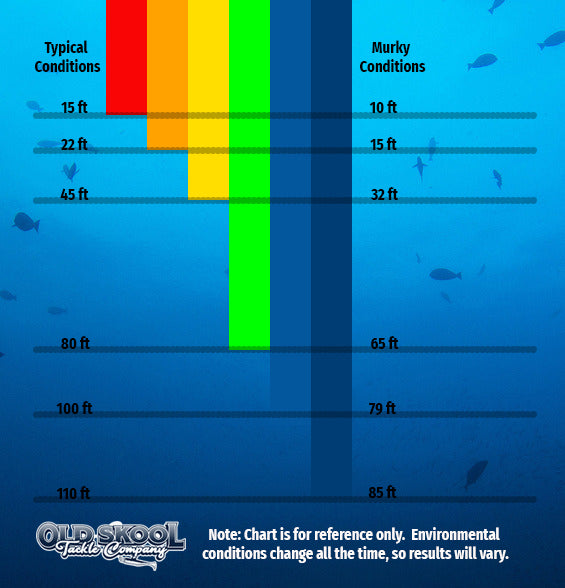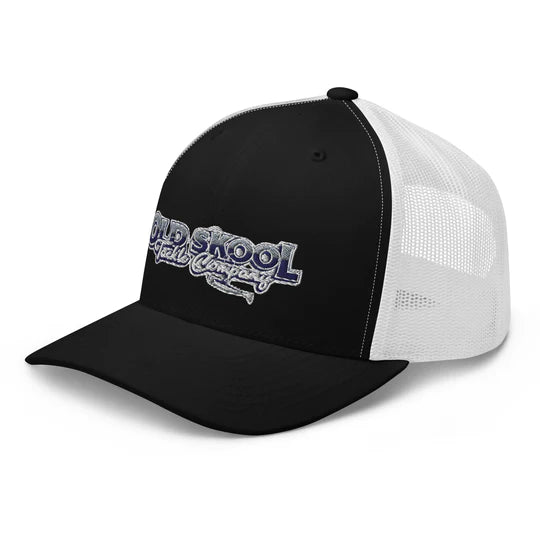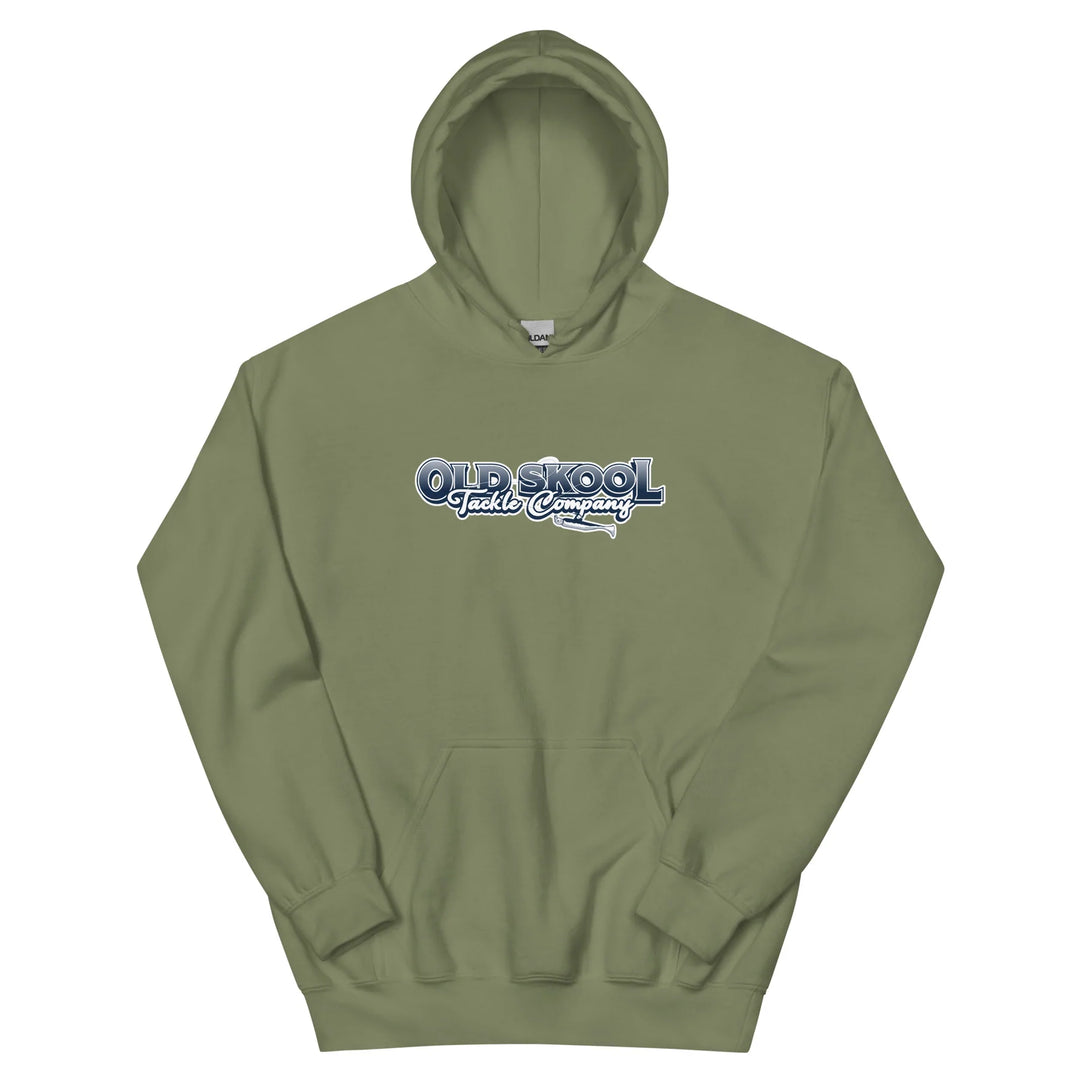Catch More Fish - Choose the Right Color!
The Science of Choosing the Right Color
Bryan Dolph - Owner of Old Skool Tackle LLC
10/9/2023
Ever wonder why fish bite on one color and not another one day and not the next? If it isn't chartreuse is it of use? We set out to answer some of those questions with science. Understanding how color is affected by light and water is crucial to having a productive day on the water.
When fishing lures are submerged underwater, the way colors appear can change due to light absorption and scattering. However, in the context of fishing lures, the change in color appearance can be critical for attracting fish. Here's how bait colors can dissipate underwater in water conditions typically found around the Chesapeake Bay region:

(Above) This chart shows how lure colors fade throughout the water column.
-
Color Shift: The color of a fishing lure may appear different underwater compared to when it's above the surface. This shift can be caused by the selective absorption of certain wavelengths of light by water. In particular, the longer wavelengths (reds and oranges) tend to be absorbed first, leaving the shorter wavelengths (blues and greens) dominant.
-
Depth: The depth at which you are fishing can significantly affect how the lure's colors appear. As you go deeper into the water, the shift toward blue and green hues becomes more pronounced. Therefore, the lure's colors may not look the same at various depths, which can impact their visibility to fish.
-
Water Clarity: The clarity of the water plays a significant role in how colors appear underwater. In clear water with minimal suspended particles, the colors of the lure may remain more true to their original appearance. In murky or turbid water with more suspended particles, the lure's colors may appear muted or washed out.
-
UV Light: Some fishing lures are designed with UV-reflective or UV-reactive materials. UV light penetrates water differently than visible light, and certain fish species can see UV light even in deep or murky water. Lures with UV properties may appear more vibrant to fish that are sensitive to UV wavelengths.
- Biological Factors: The perception of color underwater can also be influenced by the vision of the fish species you are targeting. Different fish have different color vision capabilities, and some may be more sensitive to certain colors than others.
Because of these factors, anglers often choose lures with colors and patterns that are likely to stand out and be visible to the target fish species in the specific fishing conditions they are facing. It's essential to consider the water conditions, depth, and the visual capabilities of the fish when selecting and using fishing lures to maximize their effectiveness.
Fluorescent colors can be effective for fishing lures when used underwater. These colors tend to stand out and catch the attention of fish in various water conditions. However, the effectiveness of fluorescent colors can vary depending on factors such as water clarity, depth, and the species of fish you are targeting.
Using Fluorescent Lures
Here are some key points to consider when using fluorescent-colored fishing lures underwater:
-
Water Clarity: Fluorescent colors are most effective in clear or lightly stained water. In murky or muddy water, the visibility of these colors may be reduced, and natural or more contrasting colors might work better.
-
Depth: As you go deeper underwater, certain colors begin to lose their visibility because longer wavelengths like red and orange are absorbed first. Fluorescent colors like chartreuse and bright green can remain visible at deeper depths compared to other colors.
-
Species: Different fish species may have different preferences for lure colors. Some species are attracted to bright, flashy colors, while others may be more responsive to natural-looking lures. Research the specific preferences of the fish you are targeting.
-
Light Conditions: The available light also plays a role. On sunny days, fluorescent colors can reflect light and attract fish. In low light or overcast conditions, you might want to use lures with more contrasting colors.
-
Lure Design: The design of the lure, including its shape, size, and movement, can be just as important as its color. Ensure that your fluorescent-colored lure mimics the natural prey of the fish you are targeting.
-
Experimentation: Fishing often involves trial and error. Don't be afraid to experiment with different colors and lure types to see what works best in your specific fishing environment. Sometimes, a subtle change in color or lure style can make a big difference.
- Retrieve Technique: The way you retrieve your lure also matters. Vary your retrieval speed, depth, and action to find the most effective presentation for the fluorescent-colored lure.
Ultimately, the choice of using a fluorescent color fishing lure underwater depends on the conditions and the preferences of the fish you are trying to catch. It's a good idea to carry a variety of lure colors and styles in your tackle box to adapt to changing circumstances and increase your chances of success. We have a variety of colors, styles and sizes available in our online store!





Leave a comment